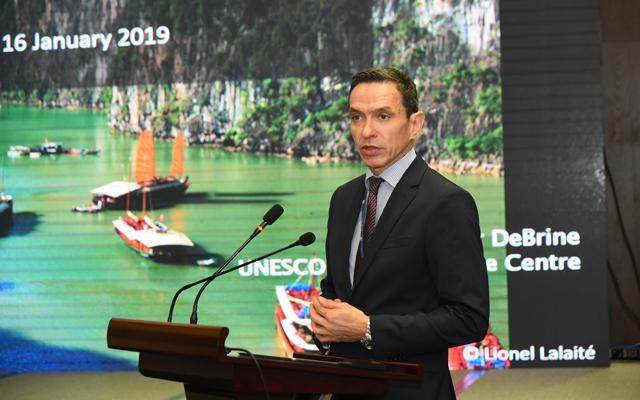South-east Asia is urged to collectively embrace technology to showcase the region’s diverse cultural heritage and boost tourism across member states.
At the ‘Connecting heritages for ASEAN tourism development in digital age’ conference held at ATF 2019 last week, delegates heard the vital role digital technology plays in promoting tourism in the modern world.

Peter DeBrine, senior project officer, UNESCO World Heritage Nature, Sustainable Tourism and Outreach Unit, said: “Technology has become crucial for modernising the interpretation at cultural and natural sites, providing innovation in educational ways to enhance the visitor experience.”
He added with 38 World Heritage sites across South-east Asia and each member country home to at least one, this is a prime opportunity for nations to work together to develop cross-cultural and cross-country trips.
And technology is the best way to inspire and entice visitors.
Said DeBrine: “As much as UNESCO likes lists, we like storytelling even more. How we tell our stories is directly linked to digital technology – it’s right in our hands with mobile phones. Digital and technology tools play a pivotal role in linking culture with sustainable tourism development.”
DeBrine said a joint initiative between UNESCO and National Geographic is an example of best practice in this area. Funded by the European Union, the World Heritage Journeys Europe online platform showcases the continent’s unique cultural heritage while supporting sustainable tourism development.
Under different travel themes, Europe’s 34 World Heritage sites are brought to life through more than 1,000 pages that feature powerful images, stories, videos and interactive maps.
Added DeBrine: “The goal is to use digital technology to change the way people travel and experience local culture, and gain deeper appreciation about world heritage and the destination as a whole. We want to try and encourage people to stay longer.”
Con Apostolopoulos, senior vice-president National Geographic Partners, Asia Pacific and the Middle East, said this model could be transferred to South-east Asia, with curated journeys focusing on gastronomy, romance, heritage and art to create a range of compelling stories that encourage cross-country trips across South-east Asia.
However, he said the major challenge lies in member states working together.
“Where I see a significant opportunity for (South-east Asia) is by pooling their resources and do something of a huge scale. Each story is uniquely yours, because pooling your resources doesn’t mean losing your identity.”




















